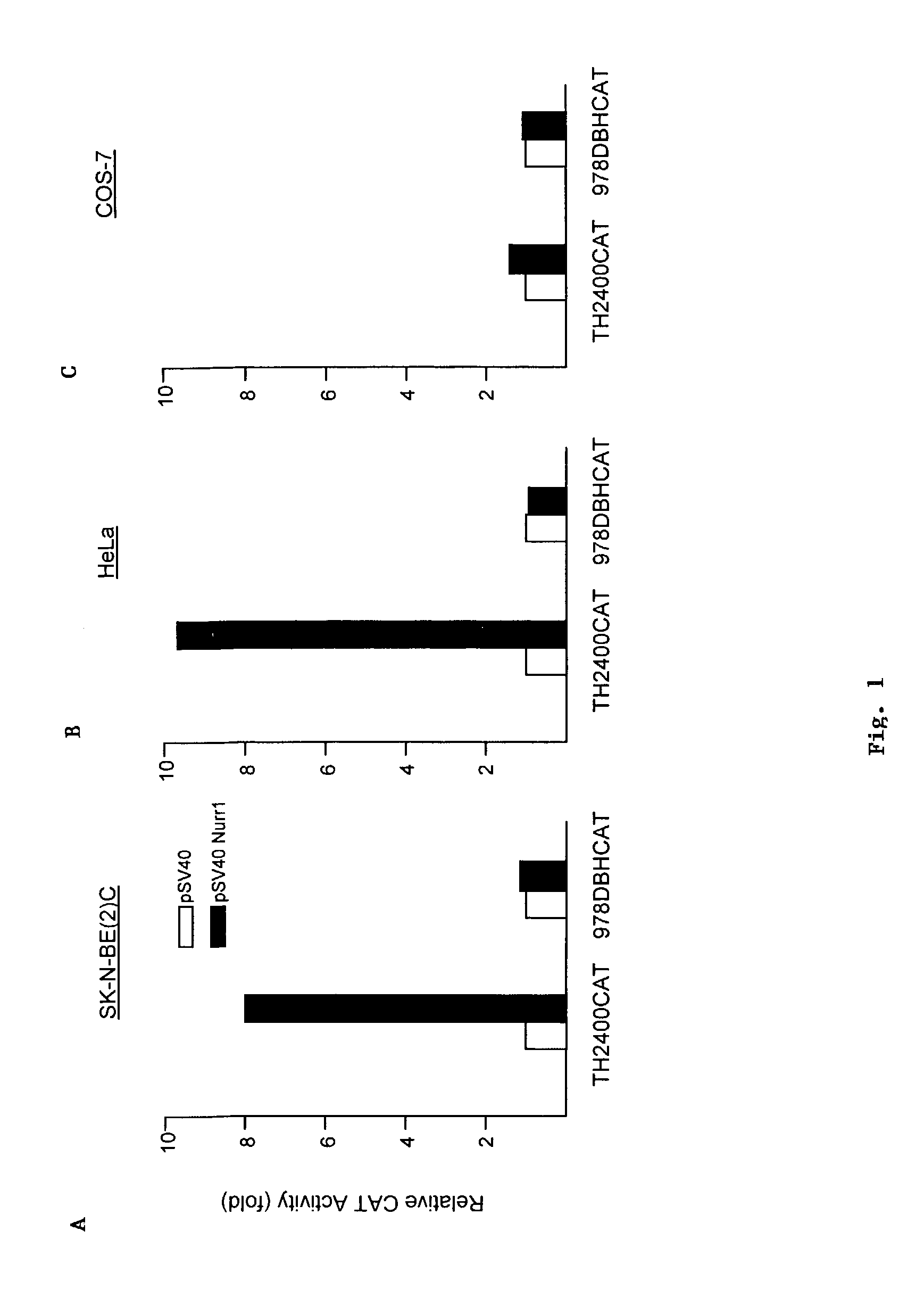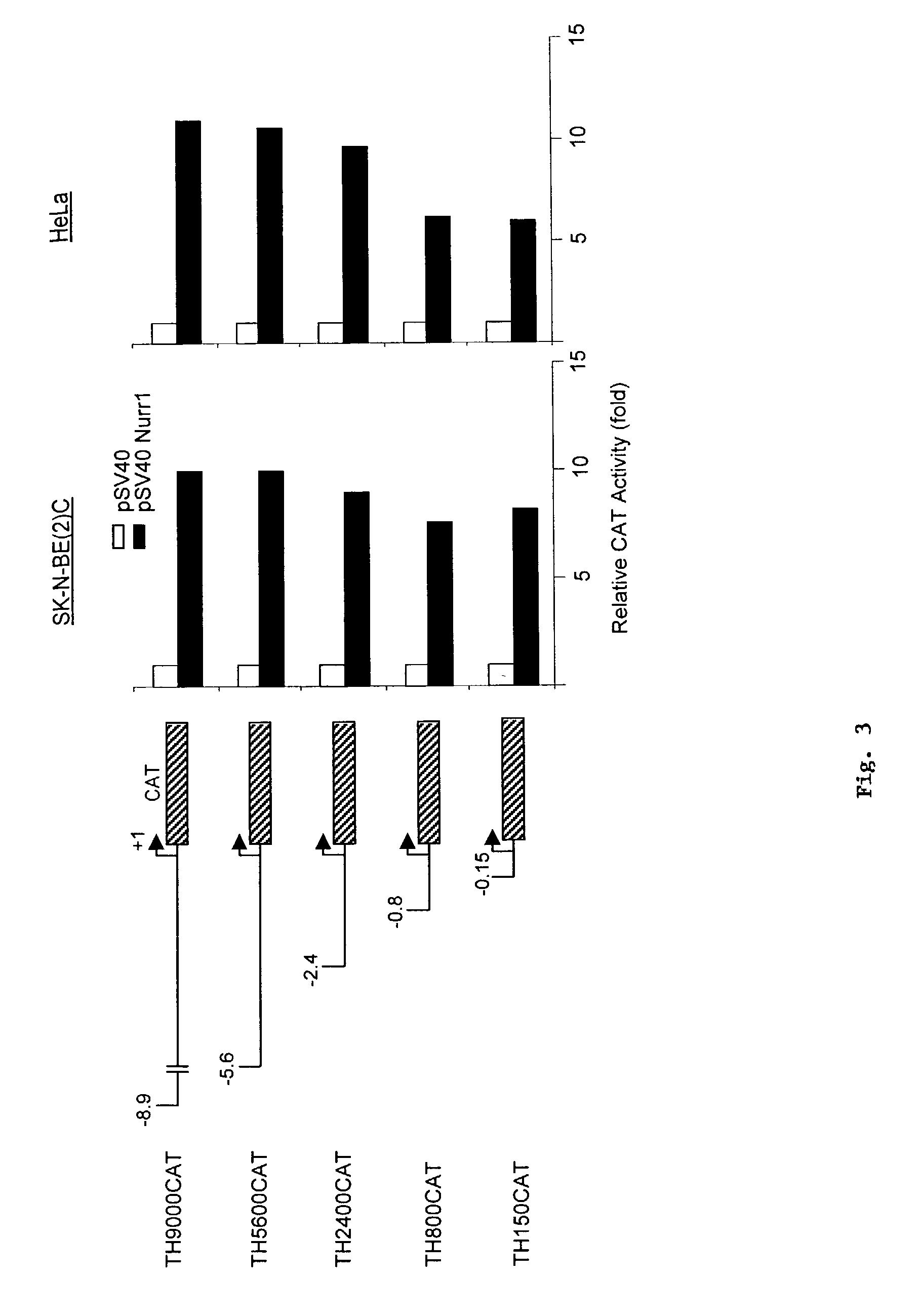Multimerized enhancer domains for cell-specific expression
a technology of enhancer domains and enhancers, applied in the field of multimerized enhancer domains for cell-specific expression, can solve the problems of not providing cell-type specific and controllable transgene expression by viral promoters, and particularly challenging gene therapy for disorders of the nervous system, and achieve the effect of increasing the minimal promoter activity
- Summary
- Abstract
- Description
- Claims
- Application Information
AI Technical Summary
Benefits of technology
Problems solved by technology
Method used
Image
Examples
example
[0051]Using the methods described below, we found that Nurr1 robustly transactivates the promoter activity of the TH gene, but not that of the dopamine beta-hydroxylase (DBH) gene in in SK-N-BE(2)C and HeLa cell lines (FIGS. 1A and 1B, respectively). Nurr1 does not affect the promoter activity of either gene in Cos-7 cells (FIG. 1C). Nurr1 activates the promoter activity of the TH gene in a concentration-dependent manner (FIG. 2).
[0052]We performed a deletional analysis of the TH 5′ regulatory sequence, and found that the proximal 150 bp upstream of the TH gene retains most of the responsiveness to Nurr1 transactivation (FIG. 3).
[0053]Three potential Nurr1-binding sites (NL1, NL2, and NL3) were identified proximal to the transcriptional start site (FIG. 4A). While NL3 shows a perfect match with a known Nurr-1 binding motif, NL1 and NL2 each have a single base deviation from the consensus motif. Deletion of NL1 results in the loss of the majority of Nurr1-mediated transactivation of ...
PUM
| Property | Measurement | Unit |
|---|---|---|
| nucleic acid | aaaaa | aaaaa |
| concentration | aaaaa | aaaaa |
| length | aaaaa | aaaaa |
Abstract
Description
Claims
Application Information
 Login to View More
Login to View More - R&D
- Intellectual Property
- Life Sciences
- Materials
- Tech Scout
- Unparalleled Data Quality
- Higher Quality Content
- 60% Fewer Hallucinations
Browse by: Latest US Patents, China's latest patents, Technical Efficacy Thesaurus, Application Domain, Technology Topic, Popular Technical Reports.
© 2025 PatSnap. All rights reserved.Legal|Privacy policy|Modern Slavery Act Transparency Statement|Sitemap|About US| Contact US: help@patsnap.com



